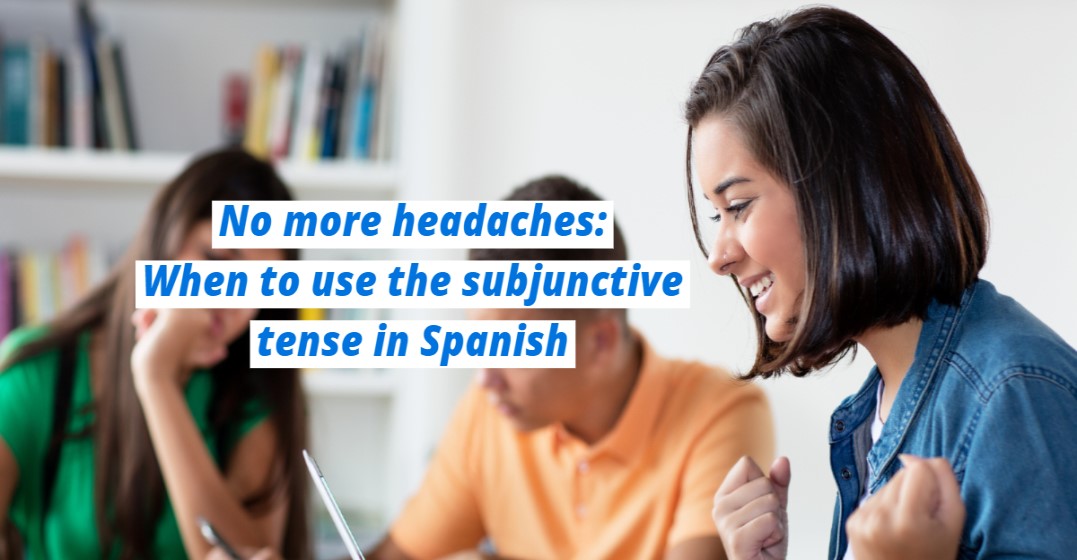Updated on January 9, 2024

When to Use the Subjunctive Tense in Spanish

The subjunctive in Spanish used to give me headaches.
As I’ve shared before, I grew up functionally bilingual. I spoke Spanish and English at home with my family but I never learned proper Spanish grammar until school. When I began Spanish classes at the age of 12, I was shocked at how hard it was.
I tell Spanish learners my background because I want to reiterate: Spanish tenses can be wild.
For native English speakers, some of the language tenses common in Spanish have dropped out of everyday use in English.
This is the case with the subjunctive tense. Sure, it exists in English. We know how to use it, but it is not part of our everyday language. Once you understand how the tense works in English, it becomes simple to master subjunctive in Spanish.
Let’s break down how and when to use the subjunctive tense.

The subjunctive tense is a verb form that explores conditional or imaginary situations. It also expresses wishes, demands, and suggestions.
These sentences all use subjunctive tense.
Since the tense in English has dropped out of daily use in modern times, the best way to recognise it is to imagine how people spoke long ago. The phrase “that” as it is used above indicates subjunctive in English.
This is where a childhood (or let’s face it, adulthood) of watching a lot of television comes in handy. Review popular period dramas that feature British royalty, proper speaking, posh accents, and official settings.
The Crown. The Crawley family in Downton Abbey. Even cheesy medieval-style films like The Princess Bride or Monty Python and the Knights of Ni will have characters using the subjunctive correctly.
Much more common in daily use, the subjunctive in Spanish talks about more than imaginary situations. It also expresses opinions, doubts, the abstract, and emotions.
Here are the example phrases from above written in Spanish.
To recognise when to use the subjunctive tense in Spanish, listen for that proper phrasing. Anytime you might use a that phrase in English is the right time.
The basic form of a present subjunctive verb in Spanish is made by following these steps.
|
hablar | tener |
| 2. Find the present indicative yo form | hablo | tengo |
| 3. Remove the yo ending | habl- | teng- |
| 4. Add the subjunctive ending. | hable
hables hable hablemos hablen |
tenga
tengas tenga tengamos tengan |
There are two types of endings in the subjunctive in Spanish: -ar verbs conjugate using –e endings while –er/-ir verbs use –a.
There are six irregular verbs in the subjunctive tense for Latin American usage.
Alright, let’s try some of our own.
Take these two phrases:
Uncertainty is a marker of when to use the subjunctive. If you believe something, use the normal indicative form of the verb. If you don’t believe, you have uncertainty, so use the subjunctive in Spanish.
¿Verdadero o falso? Use indicative and subjunctive to express what you think is true or false.
You can mix indicative and subjunctive to point out something small.

René Descartes famously said, “I think therefore I am.” He was certain about his own thoughts. The same goes for subjunctive in Spanish. When you are talking about yourself, you can be certain. Use the indicative.
When another person is the principal subject of your statement, you must use subjunctive.
The final major situation that we use subjunctive in Spanish is when we are expressing an opinion. Although we might be certain that our opinion is right, the essence of what we are saying is subjective, therefore we use the subjunctive.
When you first start to use the subjunctive in Spanish, it can feel awkward. Especially since native English speakers aren’t adept at recognising when to use it. It can be a headache to remember all the situations that we use subjunctive and how to conjugate those six irregular verbs.
Remember that imagining proper spoken English from long ago can help. I wish that…, I hope that they…, I am unsure that we…are all phrases that use subjunctive in Spanish.
Espero que practiques el subjuntivo para que te resulte más fácil. – I hope that you practice the subjunctive so that it gets easier for you.
If you’re interested in practising stating your opinions and using subjunctive in Spanish, visit our website and sign up for your Spanish trial with a native speaker.